
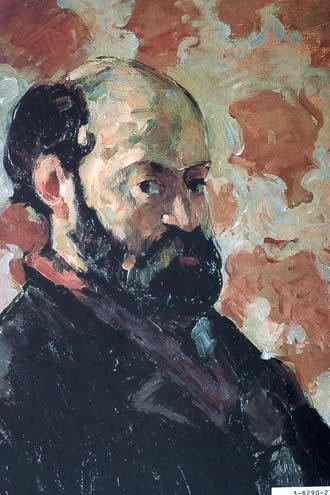
Paul Cezanne's start was chaotic.
Several elements, noted down here and there by his officially recognized biographers, testify to that. Early on this young man, coming fom the good provincial bourgeoisie, was confronted with a series of contradictions.
His father, a prosperous banker in Aix en Provence after having been a hatter, had in all evidence dreamt of a career as a lawyer for the young Paul born in 1839. Enrolled at law school in 1858 after a classic education at the Bourbon school where he became friends with Emile Zola, Paul Cezanne managed to convince his father to grant him an allowance to go to Paris to take drawing courses at the Swiss Academy.
A short stay, during which, in 1861, he failed the entrance exam for the Beaux Arts and returned to Aix en Provence firmly decided to become a full-time painter.
Starting at this time, he made frequent trips to Paris, helped out by Emile Zola, his childhood friend, and frequented the leaders in impressionnism. Like a craftsman who must prove himself, he observed and copied the classical masters of reference (Poussin, Raphaal, El Gréco and Titien). Admirer of Delacroix for the emotional force and impressed by the naturalist realism of Courbet, his first paintings were pierced by a poorly mastered expression. Portraits, religious scenes, still lifes and landscapes of Provence indicated during ten-odd years a poorly mastered will to find order in the uninterrupted stream of sensations experienced at the contact with nature and its like.
Some portraits, like that for example of Achille Emperaire, show characters "too human" to be accepted by the general public more used to, with Ingres and David, ideal representations of humanity. He was refused the possibility in 1863 of exhibiting at the Salon Officiel but thanks to Pissarro's backing and unfailing support, he took part in several impressionist exhibitions from 1874 to 1877. It was a bitter failure. The critics raged on. Paul Cezanne was described as an ogre. Of all the impressionists, he was the most "monstruous", the most awkward, the most clumsy.
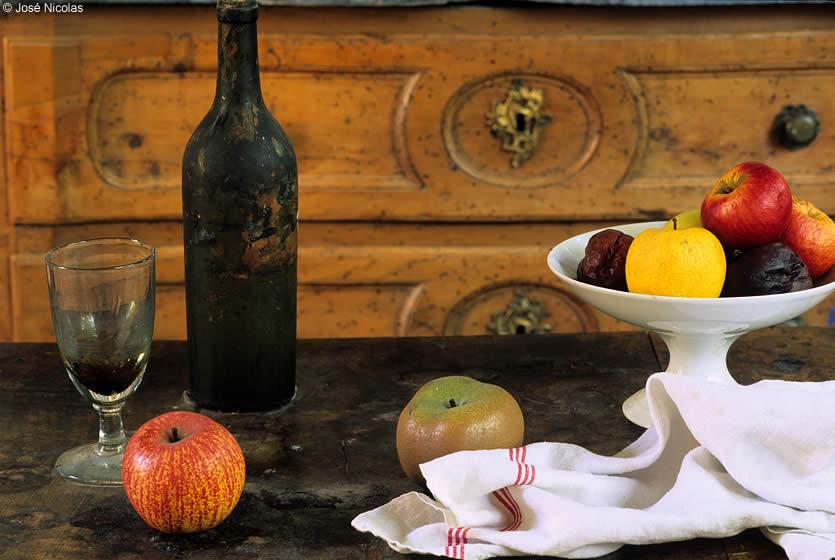
Still life, Atelier des Lauves, Aix en Provence
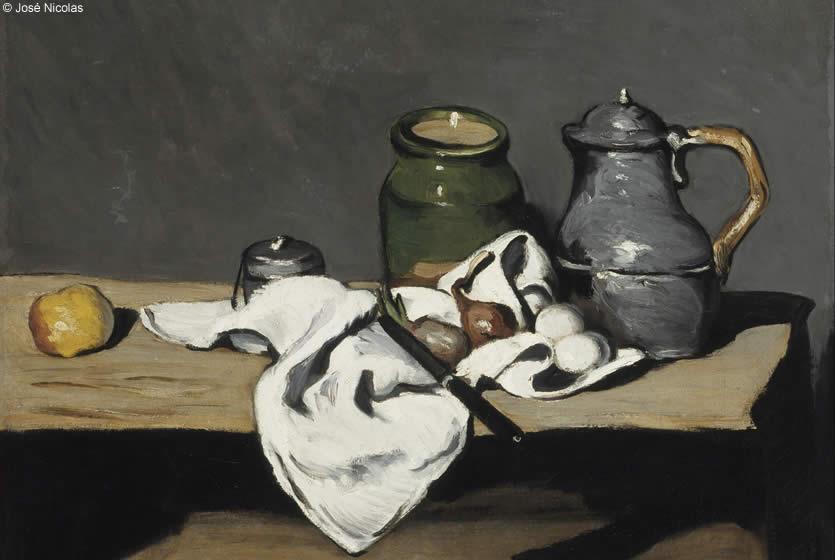
Still life with kettle, Paul Cezanne, 1867-1869, Orsay Museum
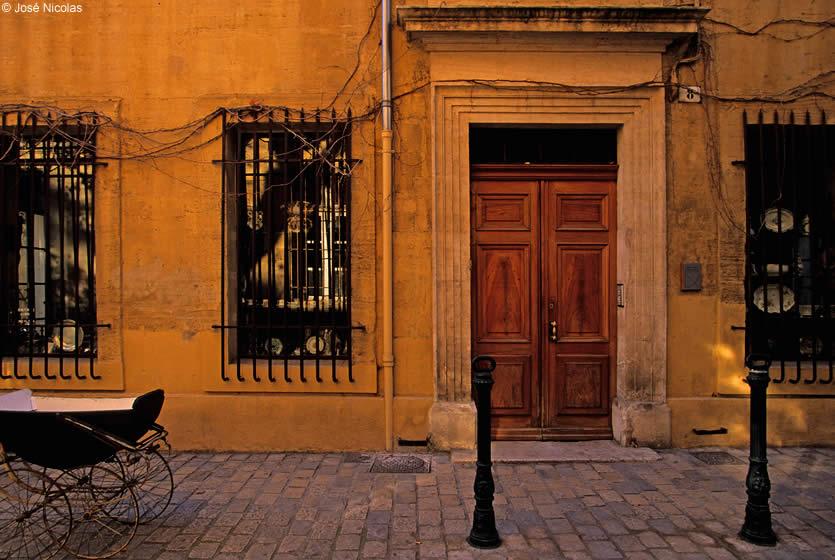
The house where Paul Cezanne was born
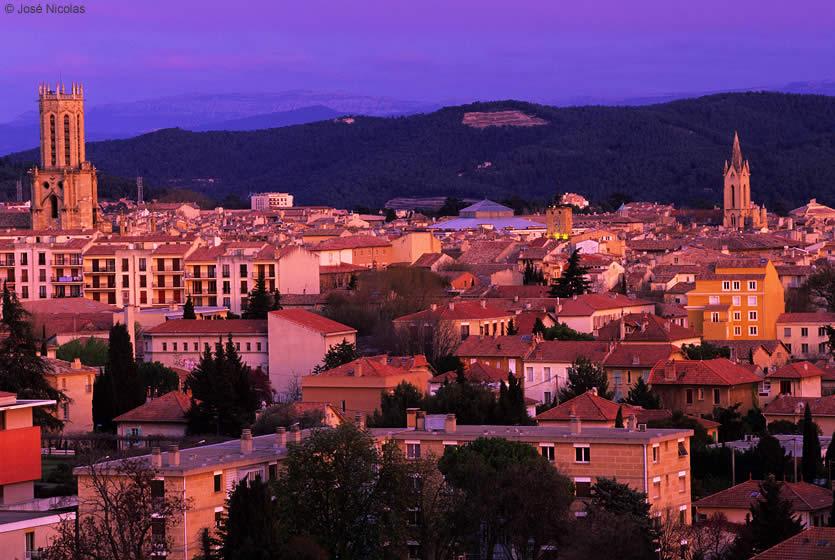
Aix en Provence, panoramic view
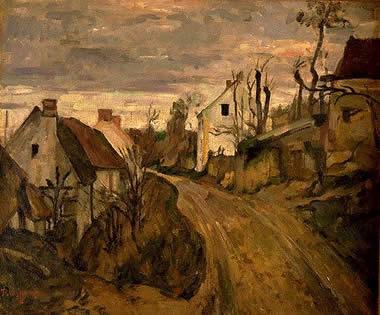
From then on, he stood back from the impressionist movement. Haunted by a tragic vision of life - "Life is frightening," he proclaimed loud and clear - he continued to work by Pissarro's side. In Auvers-sur-Oise, he honed the technique of motif painting, in tune with his models and close up to the landscapes Provence. Progressively, an objective view of nature emerged. In a few paintings he succeeds in isolating a visual sensation by recreating the effects of the light and the consistency of the air. But the obstacles to overcome are innumerable.
Paul Cezanne, odviously, did indeed try to resolve a difficult paradox. It was a matter, as emphasizes the philosopher Maurice Merleau-Ponty in an article titled "Cezanne's Doubt" of "searching for reality without giving up sensations, without taking any other guide than nature in the immediate impression, without outlining the contours, without surrounding the colour by the drawing, without composing the perspective nor the painting". In those early years, his portraits, such as that of Victor Choquet, or the still lifes, like the apples, give the feeling of being (re)born into life in the space of a canvas.
But to catch in an authentic manner the true and living presence of things of this world, Paul Cezanne knew that "the expression of that which exists is an infinite task". A task to which he would obstinately and patiently devote his life.
Other accommodations
Vacation rentalWhere to sleep?